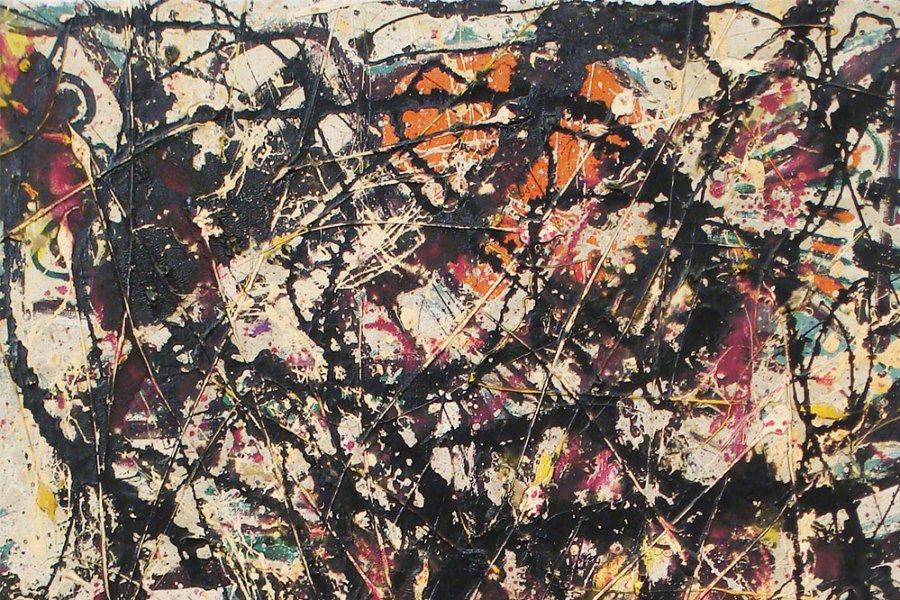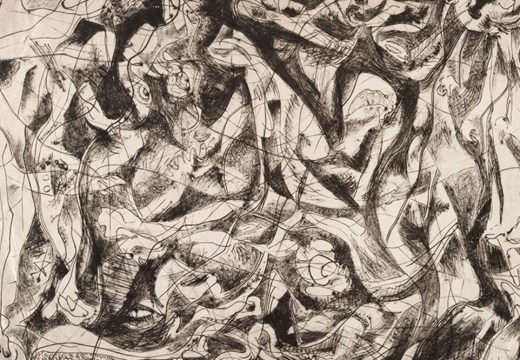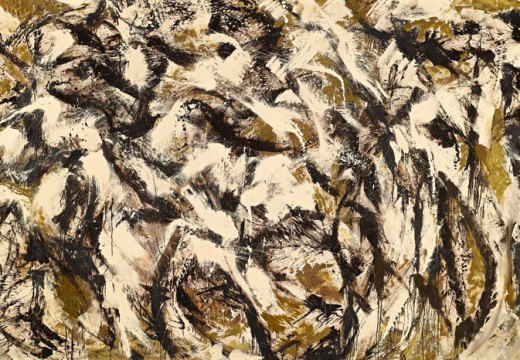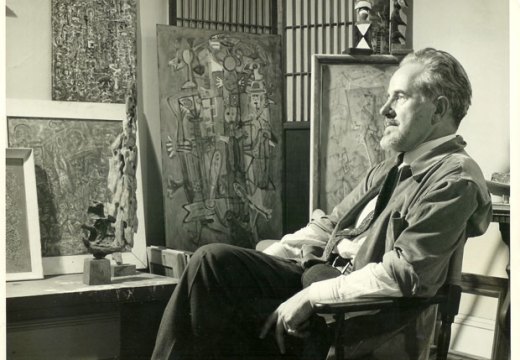‘ Four things to see this week’ is sponsored by Bloomberg Connects, the free arts and culture app. Bloomberg Connects lets you access museums, galleries and cultural spaces around the world on demand. Download the app here to access digital guides and explore a variety of content.
Four things to see this week’ is sponsored by Bloomberg Connects, the free arts and culture app. Bloomberg Connects lets you access museums, galleries and cultural spaces around the world on demand. Download the app here to access digital guides and explore a variety of content.
Each week we bring you four of the most interesting objects from the world’s museums, galleries and art institutions, hand-picked to mark significant moments in the calendar.
Theories about the cause of the car crash that killed Jackson Pollock cross and clash with each other like the lines of paint on his canvases. Some say that his session with photographer Hans Namuth – who famously filmed the painter’s drip technique through a pane of glass – made Pollock feel disingenuous, leading him back to drinking after a period of sobriety. Others blame the Sullivanian Institute for Research in Psychoanalysis, with which the critic Clement Greenberg had encouraged Pollock and his wife, the artist Lee Krasner, to get involved. The institute encouraged drinking, believing that alcohol was a useful disinhibitor that could help with therapy. What we do know for certain is that on 11 August 1956, Pollock drove to a bar with his lover Ruth Kligman and her friend Edith Metzger. After many drinks, they got back in the car; Pollock lost control, killing himself and Metzger in the crash.
This tragic story was reenacted by Ed Harris in 2000 in an eponymous biopic of the artist; it has become absorbed into a romanticised image of Pollock as a tortured genius. While this legend – alongside that of Mark Rothko’s overdose and Willem de Kooning’s misogyny – tends to overshadow the history of Abstract Expressionism, it’s worth taking a closer look at the work itself.

Shooting Star (1947), Jackson Pollock. Museo Nacional de Bellas Artes
1. Shooting Star (1947), Jackson Pollock
Museo Nacional de Bellas Artes, Buenos Aires
The 1951 film of Pollock by Hans Namuth revealed that there was method behind the messiness: Pollock did not flick paint arbitrarily, but carefully poured drips onto the canvas according to a deliberate process. In this painting from 1947, the artist’s gestures can be traced in the dark lines that dominate the composition, leading the eye to seek out the path of a shooting star against a chaotic backdrop. Click here to find out more.

PH-1123 (1954) Clyfford Still. Clyfford Still Museum, Denver. © City and County of Denver/ARS, NY
2. PH-1123 (1954), Clyfford Still
Clyfford Still Museum, Denver
Clifford Still was one of the more reclusive Abstract Expressionist painters. In 1961 he left the art scene of New York behind for a quieter life in Maryland, but the work he produced is no less significant to the movement. The titles of his paintings are deliberately obscure – he did not wish them to become ‘illustrations or pictorial puzzles’, as he put it. This work, with its large swathes of black, drip of bright orange and a semi-hidden tear of blue, exemplifies the artist’s restrained approach to colour. Click here to find out more on the Bloomberg Connects app.

Totemic Figure (1958–60), Robert Motherwell. Museo Nacional Centro de Arte Reina Sofía
3. Totemic Figure (1958–60), Robert Motherwell
Museo Nacional Centro de Arte Reina Sofía, Madrid
Robert Motherwell is often hailed as one of the more intellectual artists associated with the Abstract Expressionist movement. His work makes reference to existentialism, the poetry of Federico García Lorca and French symbolism, as well as drawing on political subjects such as the Spanish Civil War. In this painting, Motherwell appropriates the idea of the totem from Native American cultures to produce a work that moves between the abstract and the figurative. Click here to find out more.

Untitled (Ochre over Brown) (1968), Helen Khal. Barjeel Art Foundation, Sharjah
4. Untitled (Ochre over Brown) (1968), Helen Khal
Barjeel Art Foundation, Sharjah
The influence of the movement was far reaching. In the 1960s, the Tripoli-based artist Helen Khal shifted from portraiture to abstraction as a result of her exposure to Abstract Expressionism, and established Gallery One with her husband, the poet Yusuf Khal. But while Khal was undoubtedly influenced by the colour field works of Mark Rothko, this hazy canvas, with its ochre overtones, could also be read as a Lebanese landscape. Click here to find out more.
Download now
![]() ‘Four things to see this week’ is sponsored by Bloomberg Connects, the free arts and culture app. Bloomberg Connects lets you access museums, galleries and cultural spaces around the world on demand. Download the app here to access digital guides and explore a variety of content or scan the QR code.
‘Four things to see this week’ is sponsored by Bloomberg Connects, the free arts and culture app. Bloomberg Connects lets you access museums, galleries and cultural spaces around the world on demand. Download the app here to access digital guides and explore a variety of content or scan the QR code.
Unlimited access from just $16 every 3 months
Subscribe to get unlimited and exclusive access to the top art stories, interviews and exhibition reviews.














![Masterpiece [Re]discovery 2022. Photo: Ben Fisher Photography, courtesy of Masterpiece London](http://www.apollo-magazine.com/wp-content/uploads/2022/07/MPL2022_4263.jpg)
It’s time for the government of London to return to its rightful home